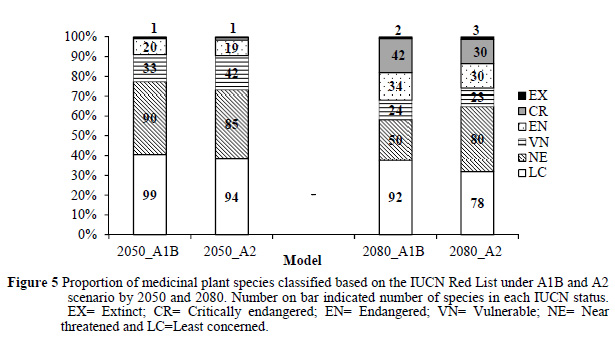Predicting Vulnerability of Medicinal Plants Used by Karen People in Chiang Mai Province to Climatic Change
Main Article Content
Abstract
Anthropogenic climate change has already had an impact on plant diversity and mortality around
the world. To exemplify this issue, vulnerability of medicinal plants used by the Karen in Chiang Mai
Province to climatic change was investigated using species distribution model (SDM). A total of 244
medicinal plants species were evaluated. The greenhouse gas emissions scenarios, A1B (medium-high
emissions) and A2 (high emissions) were used to examine the potential future species distribution under
climatic changes for the years 2050 and 2080. It was found that more than 60% of the plants were
predicted to suffer significant losses in their suitable ranges by the years 2050 and 2080, respectively.
Following the International Union for Conservation of Nature and Natural Resources (IUCN) Red List
criteria, four plant species were predicted to become extinct due to climate change in Chiang Mai
Province under A1B or A2 scenarios by 2080. Raising the climate change awareness of the Karen people
and supporting the sustainable use of medicinal plants will be crucial in preserving the medicinal plants.
Cultivating threatened medicinal plants in the home-gardens of the Karen people is also recommended in
order to decrease the effects of climate change on these plants.
Article Details
Published articles are under the copyright of the Environment and Natural Resources Journal effective when the article is accepted for publication thus granting Environment and Natural Resources Journal all rights for the work so that both parties may be protected from the consequences of unauthorized use. Partially or totally publication of an article elsewhere is possible only after the consent from the editors.

